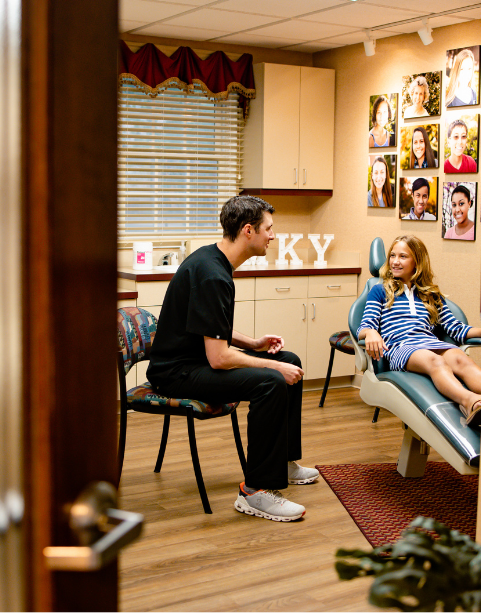
Children’s orthodontic problems develop from genetics, mouth injuries, early or late loss of baby teeth, or thumb-sucking habits. Some common issues we see in our young patients include crowded teeth, too much space between teeth, jaw growth problems, protruding teeth, and bad bites. The good news is that we’re experts at correcting childhood orthodontic problems. Starting early gives your child the optimal outcome with the least invasive treatment possible.
Two-Phase Treatment
After meeting your child and assessing their orthodontic health, we may recommend splitting their treatment plan into two phases. Splitting the treatment is often the most efficient and effective way to correct the problems with their teeth and bite.
Phase One: Guiding your Child's Jaw Development
As they grow, children often exhibit early signs of problems with their jaw development, indicating interceptive treatment is the best path forward. Childhood is an ideal time to begin Phase One treatment because children's jawbones are still developing and respond well to treatment. Most children lose all of their baby teeth by age 13. By the end of a child’s teen years, their jawbones have finished growing. Correcting jaw alignment once the bones have stopped growing can be more invasive and more expensive, possibly including surgery to realign the jaws or the removal of permanent teeth.
A palatal expander simplifies and shortens your child’s overall treatment. A palatal expander is a slim appliance affixed to the inside of the upper molars. The expander exerts gentle, outward pressure in order to widen the upper jaw. Palatal expanders effectively correct misaligned bites, remedy crowded or impacted teeth, and can prevent extractions.


